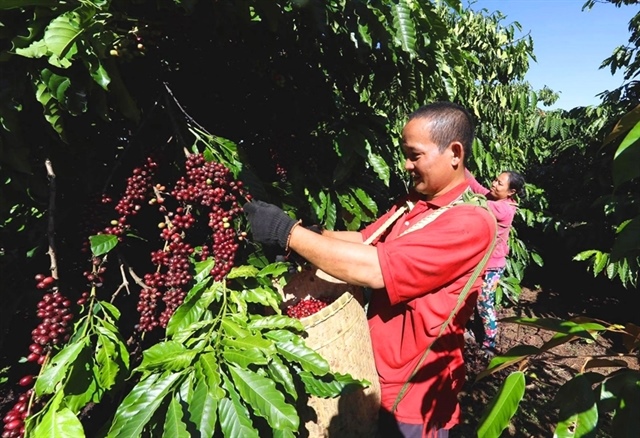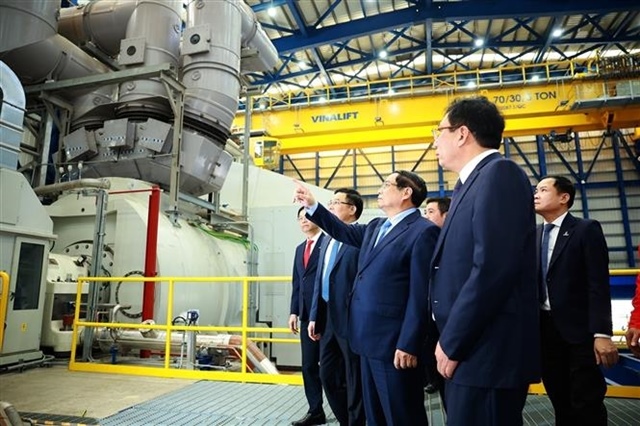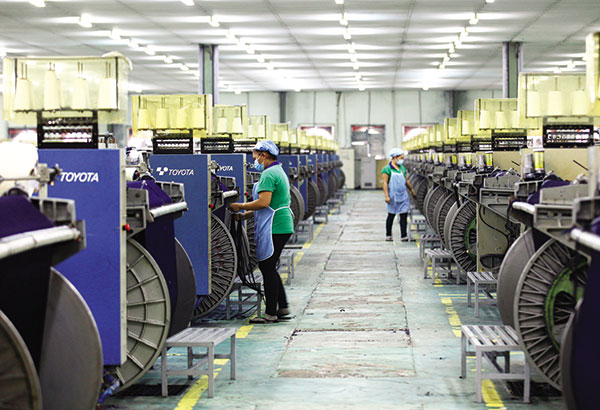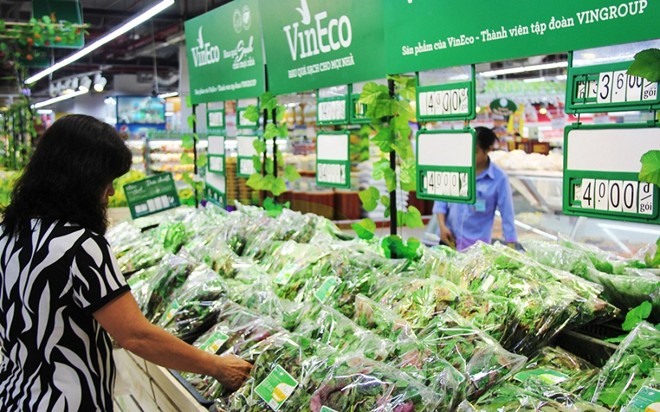Providing tailwind to Vietnamese power plants
Providing tailwind to Vietnamese power plants
General Electric Renewable Energy is known as the world’s leading supplier of wind turbines, with a diversified portfolio of onshore and offshore turbines and the latest technology to foster wind power development.
In 2016, GE Renewable Energy entered into a collaboration with the Ministry of Industry and Trade (MoIT) to develop a minimum of 1,000 megawatts of new wind farms by 2025. Peter E. McCabe, president and CEO of GE Renewable Energy’s Onshore Wind, spoke with VIR’s Ngoc Mai about the co-operation with the Vietnamese government and MoIT, changes in market regulations, and the latest technology in wind power.
Could you evaluate the progress of GE’s co-operation with MoIT on wind farm development?
In May 2016, in the presence of former US President Barack Obama, we entered into a co-operation with MoIT to facilitate the master plan of developing a minimum of 1,000MW of new wind farms. Since then, we have been working closely with MoIT to draft a bankable PPA (power purchase agreement). The purpose of this task is to get international financiers to recognise our bankable PPA as the current ones are too simple and certainly unable to draw attention.
Simultaneously, we have also been working with local developers to enhance the feasibility of the project so that the ministry would be more likely to accept our proposal and apply our newly adjusted PPAs within a short time.
Regarding the simplicity of current PPAs, has GE encountered any difficulties while working with Vietnamese agencies to make this project feasible?
MoIT has been hugely supportive of our work of drafting wind energy project proposals to submit to the Vietnamese government, especially the prime minister. The government has been co-operative in modifying the language of the projects so that they would become investable or bankable.
MoIT’s recent proposal will increase the Feed-in-Tariff (FiT) from 7.8 to 8.77 US cent per kWh for onshore wind power projects. Do you think this adjustment is appealing enough for foreign investors to engage in Vietnamese wind power projects?
The largest hurdle is in the financing of the projects. The government has been vigorously working to adjust the language of PPAs to boost financing. With our low wind speed technology (designed for low wind speed areas such as Vietnam and neighbouring countries), I believe GE will be more than capable of accelerating the progress of current and upcoming wind energy projects.
Yet the increase in the FiT will generate returns much faster, allowing investors and developers to recover their original funding in a shorter amount of time and take far fewer risks. The adjusted language of the PPAs and the modified tariff should draw more attention from foreign investors, raising their interests in the country’s wind farm projects.
What does GE bring to the table when it comes to onshore wind development? What sort of technologies, expertise, and financing tools will you make available in Vietnam?
First of all, GE has a division called EFS (Energy Financial Services) that is currently present in many of our business transactions around the world. Each year, we manage to sell 8-9GW, 50 per cent of which are financed with debt or most often equity through our EFS system. The division could help raise capital in the market to support on-going projects. Based on our experience in applying this system in other countries, we are positive the same method will work in the wind energy market of Vietnam.
Secondly, in terms of technical solutions, GE could offer to help reduce the Levelised Cost of Energy (LCoE) in Vietnam thanks to our low wind speed turbines. If the diameter of the rotors increases, the generated power is exponentially amplified. As a result, a negligible extra cost to increase the rotors’ can lead to a significant rise in power generation and later on to a remarkable reduction in LCoE. Additionally, the technology is universally applicable to any form of terrain and any environmental condition. Thus, GE has set the target of acquiring the optimal rotors at the largest and optimal transmission towers with maximum height for the country’s wind energy projects.
The rotors and transmission towers specifically targeting wind energy generation will be available from the fourth quarter of 2018. With the technology and readily-utilised products available by the end of 2018, we will be able to provide about 25 per cent more energy than the current production rate, with a minor rise in cost.
Let me illustrate how this cost-effective technology has contributed to my home country, the United States. For the last seven years, after the application of enlarged rotors and transmission towers, our strategy has helped the US reduce LCoE by 30 per cent, validating the feasibility of the technology.
The Vietnamese onshore wind energy market has appeared on investors radars. Do you have any plans to tap into the incoming wave of investment?
Personally, I think the market is ripe with opportunities. The government set the target of developing 800MW wind energy by 2020 which is vastly reasonable and also attainable. Since the start of the project, we have been manufacturing products specifically designed to match the wind speed captured in Vietnam, applying the low wind speed technology and utilising low wind speed turbines. Thanks to this technology, the LCoE could be dramatically reduced by 20-25 per cent. Combining this technology with the financial support from banks and applying the EFS, along with the rapid development of the local community’s expertise, there is no doubt about how economical and efficient this type of energy could become.




















